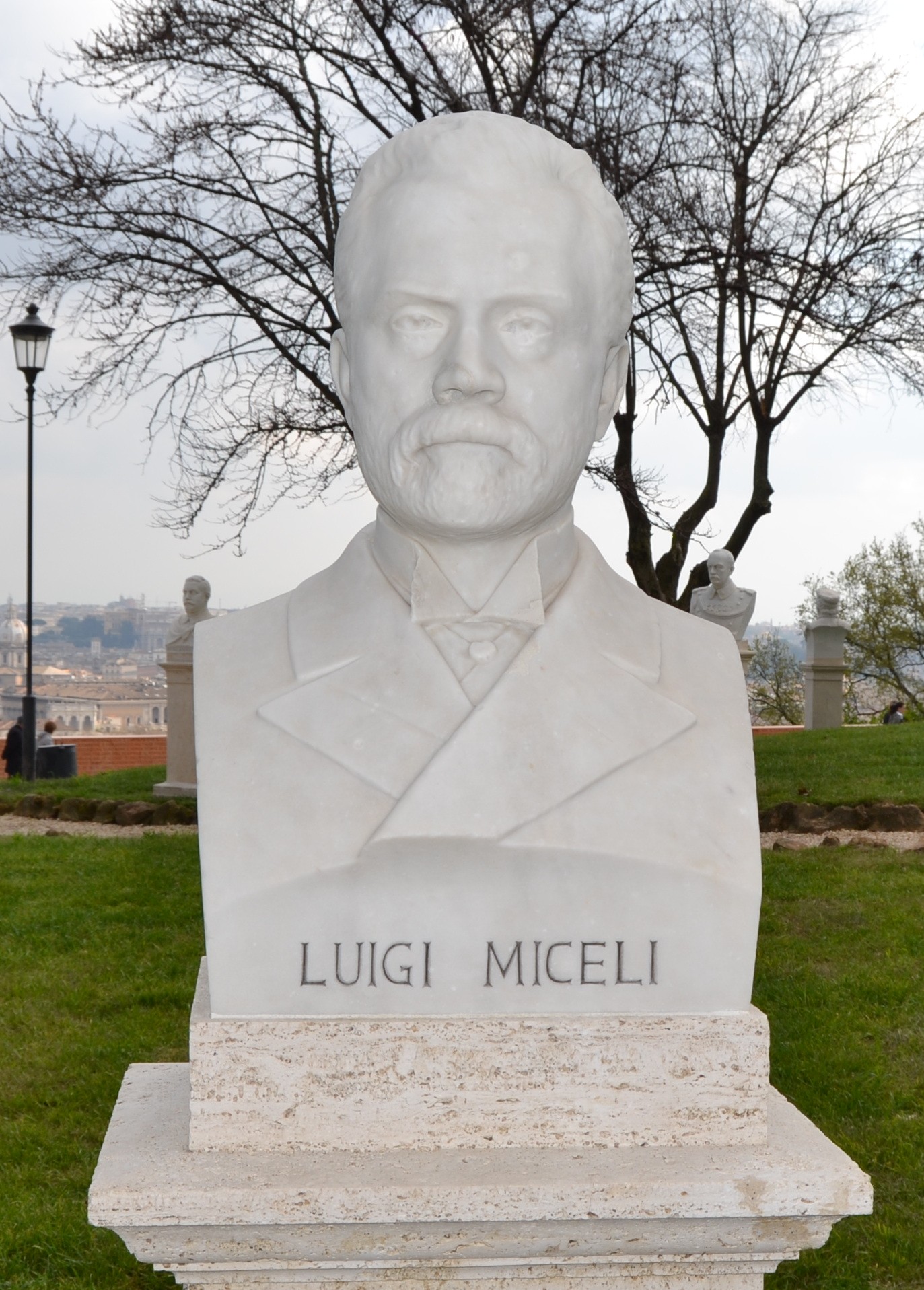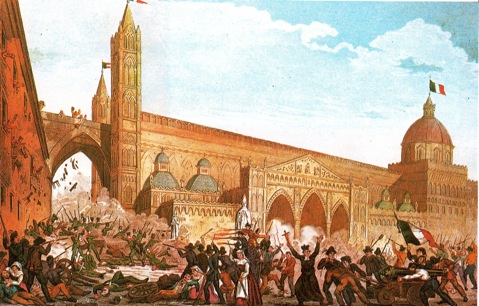|
Mala Pasqua!
''Mala Pasqua!'' (Bad Easter!) is an opera in three acts composed by Stanislao Gastaldon to a libretto by Giovanni Domenico Bartocci-Fontana. The libretto is based on Giovanni Verga's play, ' (''Rustic Chivalry'') which Verga had adapted from his short story of the same name. ''Mala Pasqua!'' premiered on 9 April 1890 at the Teatro Costanzi in Rome, six weeks before Pietro Mascagni's opera '' Cavalleria rusticana'' which was also based on Verga's play. Bartocci-Fontana's libretto adds some elements that were not in Verga's original and expands on others. The name of the Santuzza character was also changed to Carmela, but the basic plot and setting remain the same. Its title refers to the curse which Carmela places on Turiddu, the lover who had spurned her: "Mala Pasqua a te!" ("May you have an evil Easter!"). Following its Rome premiere, ''Mala Pasqua!'' had a few more performances in Perugia and Lisbon, but it was completely eclipsed by the phenomenal success of Mascagni's opera. A ... [...More Info...] [...Related Items...] OR: [Wikipedia] [Google] [Baidu] |
Adolfo Hohenstein
Adolfo Hohenstein (Saint Petersburg, 18 March 1854 – Bonn, 12 April 1928) was a German Painting, painter, advertiser, illustrator, set designer and costume designer. Hohenstein is considered the father of Italian poster art and an exponent of the ''Stile Liberty'', the Italian Art Nouveau. Together with Leonetto Cappiello, Giovanni Mario Mataloni, Leopoldo Metlicovitz and Marcello Dudovich, he is considered one of the most important Italian poster designers . Early years Adolfo Hohenstein was born in Saint Petersburg, the capital of Russian Empire, to German parents, Julius and Laura Irack. His father was a forest engineer, whose career prompted him to travel extensively. Adolfo moved to Vienna where he grew up and completed his studies. His travels took him to India, where he decorated the houses of the local nobility. The Italian experience In 1879, he settled down in Milan, Italy. He became a set and costume designer for La Scala and other theatres. There he met t ... [...More Info...] [...Related Items...] OR: [Wikipedia] [Google] [Baidu] |
Sonzogno
Edoardo Sonzogno (21 April 1836 – 14 March 1920) was an Italian publisher. A native of Milan, Sonzogno was the son of a businessman who owned a printing plant and bookstore. When he inherited the business upon his father's death he set about turning it into a publishing house, Casa Sonzogno, which opened in 1874. The company specialized in producing cheap editions of early Italian music, and became celebrated for its one-act opera contest, which began in 1883. Among the participants was Giacomo Puccini with ''Le Villi'' (1883) - who, in fact, did not win so that the opera was taken over by Giulio Ricordi, the competitor of Sonzogno. Pietro Mascagni's ''Cavalleria rusticana'', submitted in 1889 and premiering in 1890, was by far the most famous opera to win the prize. Sonzogno owned and directed the newspaper '' Il Secolo'' from 1861 until 1909. For much of that time, its editor was Ernesto Teodoro Moneta. In 1894 he established a theater, the Lirico Internazionale The ... [...More Info...] [...Related Items...] OR: [Wikipedia] [Google] [Baidu] |
Conducting
Conducting is the art of directing a musical performance, such as an orchestral or choral concert. It has been defined as "the art of directing the simultaneous performance of several players or singers by the use of gesture." The primary duties of the conductor are to interpret the score in a way which reflects the specific indications in that score, set the tempo, ensure correct entries by ensemble members, and "shape" the phrasing where appropriate. Conductors communicate with their musicians primarily through hand gestures, usually with the aid of a baton, and may use other gestures or signals such as eye contact. A conductor usually supplements their direction with verbal instructions to their musicians in rehearsal. The conductor typically stands on a raised podium with a large music stand for the full score, which contains the musical notation for all the instruments or voices. Since the mid-19th century, most conductors have not played an instrument when conducting, ... [...More Info...] [...Related Items...] OR: [Wikipedia] [Google] [Baidu] |
Voice Type
A voice type is a group of voices with similar vocal ranges, capable of singing in a similar tessitura, and with similar vocal transition points ('' passaggi''). Voice classification is most strongly associated with European classical music, though it, and the terms it utilizes, are used in other styles of music as well. A singer will choose a repertoire that suits their voice. Some singers such as Enrico Caruso, Rosa Ponselle, Joan Sutherland, Maria Callas, Jessye Norman, Ewa Podleś, and Plácido Domingo have voices that allow them to sing roles from a wide variety of types; some singers such as Shirley Verrett and Grace Bumbry change type and even voice part over their careers; and some singers such as Leonie Rysanek have voices that lower with age, causing them to cycle through types over their careers. Some roles are hard to classify, having very unusual vocal requirements; Mozart wrote many of his roles for specific singers who often had remarkable voices, and some of ... [...More Info...] [...Related Items...] OR: [Wikipedia] [Google] [Baidu] |
Teatro Nacional De São Carlos
The ''Teatro Nacional de São Carlos'' () (''National Theatre of Saint Charles'') is an opera house in Lisbon, Portugal. It was opened on June 30, 1793 by Queen Maria I as a replacement for the Tejo Opera House, which was destroyed in the 1755 Lisbon earthquake. The theatre is located in the historical center of Lisbon, in the Chiado district. History In 1792, a group of Lisbon businessmen decided to finance the construction of a new Opera House in the city. The theatre was built in only six months following a design by Portuguese architect José da Costa e Silva, with neoclassical and rococo elements. The general project is clearly inspired by great Italian theatres like the San Carlo of Naples (interior) and La Scala in Milan (interior and façade). In the early 19th century, when the Portuguese Royal Court had to flee to the Portuguese colony of Brazil to escape the invading Napoleonic troops, a theatre modelled on the São Carlos was built in Rio de Janeiro. The theatr ... [...More Info...] [...Related Items...] OR: [Wikipedia] [Google] [Baidu] |
Eucharist
The Eucharist (; from Greek , , ), also known as Holy Communion and the Lord's Supper, is a Christian rite that is considered a sacrament in most churches, and as an ordinance in others. According to the New Testament, the rite was instituted by Jesus Christ during the Last Supper; giving his disciples bread and wine during a Passover meal, he commanded them to "do this in memory of me" while referring to the bread as "my body" and the cup of wine as "the blood of my covenant, which is poured out for many". The elements of the Eucharist, sacramental bread ( leavened or unleavened) and wine (or non-alcoholic grape juice), are consecrated on an altar or a communion table and consumed thereafter, usually on Sundays. Communicants, those who consume the elements, may speak of "receiving the Eucharist" as well as "celebrating the Eucharist". Christians generally recognize a special presence of Christ in this rite, though they differ about exactly how, where, and when Chr ... [...More Info...] [...Related Items...] OR: [Wikipedia] [Google] [Baidu] |
La Civiltà Cattolica
''La Civiltà Cattolica'' (Italian for ''Catholic Civilization'') is a periodical published by the Jesuits in Rome, Italy. It has been published continuously since 1850 and is among the oldest of Catholic Italian periodicals. All of the journal's articles are the collective responsibility of the entire "college" of the magazine's writers even if published under a single author's name. It is the only one to be directly revised by the Secretariat of State of the Holy See and to receive its approval before being published. The periodical is headquartered since 1951 in the Villa Malta (Pincian Hill) situated in Via F. Crispi, Rome. In more recent times the magazine has advocated reaching out to children, teens, and young people who use and interact with social media (Facebook, Twitter, Skype, YouTube, etc., on devices such as the iPod and iPad) to an intense degree, and find ways to foster their faith life through interior meditation, including, among other exercises, the ''Spirit ... [...More Info...] [...Related Items...] OR: [Wikipedia] [Google] [Baidu] |
Luigi Miceli
Luigi Miceli (7 June 1824 in Longobardi, Italy – 30 December 1906, in Rome), was an Italian patriot, politician and a military figure, a capitan in the conflicts of the Risorgimento and a leading military figure to the Italian Liberation and Unification in 1861. Biography Luigi Miceli was a young 22-year-old lawyer when he became a member of Giovane Italia (1844), he was the leading figure in the preparation to the Calabrian insurrection in 1847 and 1848. The same year (in 1848) The Calabrian insurrection failed, and he escaped at first to Rome and later to Genoa under the protection of The Republica Romana (1849). He was condemned to death in absentia at his trial in 1854. Before the Liberation of Italy in 1861, he became a member of the Società nazionale italiana, and participated at the second war of independence with the Cacciatori delle Alpi. He was at the right hand of Garibaldi at Varese and San Fermo (1859). In 1860, he was among the leading organisers and a capitan o ... [...More Info...] [...Related Items...] OR: [Wikipedia] [Google] [Baidu] |
Federico Seismit-Doda
Federico Seismit-Doda (1825–1893) was an Italian politician who gained prominence during the Revolutions of 1848 in the Italian states. Frederico Seismit-Doda was born in Ragusa (Dubrovnik) in the Kingdom of Dalmatia (today's Croatia). His family was an Albanian from the Doda tribe of Mirditë. He graduated from the University of Padua and collaborated at Caffè Pedrocchi; in 1849 fought with the volunteers in Veneto and in 1849 participated in the defence of Roman Republic. After exile to Greece and to Piedmont in 1850, he collaborated in various newspapers and magazines, and published a volume of his memories ''Venetian Volunteers''. He died in Rome. References External links Biography 1825 births 1893 deaths Finance ministers of Italy People from Dubrovnik Italian politicians University of Padua alumni {{Italy-politician-stub ... [...More Info...] [...Related Items...] OR: [Wikipedia] [Google] [Baidu] |
Paolo Boselli
Paolo Boselli (8 June 1838 – 10 March 1932) was an Italian politician who served as the 34th prime minister of Italy during World War I. Biography Boselli was born in Savona, Liguria. Boselli was the first professor of science at the University of Rome prior to entering politics. He served for 51 years as a liberal rightist parliamentary deputy, and as a senator from 1921. Appointed Minister of Education in 1888, Boselli reorganised the Bank of Italy with his next portfolio, as Minister of the Treasury in 1899. He also served in Sidney Sonnino's 1906 government. In June 1916 he was a relatively undistinguished center-right politician and one of the oldest members of the Italian parliament, when he was appointed Prime Minister, following the collapse of the Salandra government as a result of military defeats. His government fell in October 1917 as a result of the military defeat in the Battle of Caporetto, in which Italy lost some 800,000 men, all of the conquest made so ... [...More Info...] [...Related Items...] OR: [Wikipedia] [Google] [Baidu] |
Francesco Crispi
Francesco Crispi (4 October 1818 – 11 August 1901) was an Italian patriot and statesman. He was among the main protagonists of the Risorgimento, a close friend and supporter of Giuseppe Mazzini and Giuseppe Garibaldi, and one of the architects of Italian unification in 1860.Nation-building in 19th-century Italy: the case of Francesco Crispi Christopher Duggan, History Today, 1 February 2002 Crispi served as for six years, from 1887 to 1891, and again from 1893 to 1896, and was the first Prime Minister from Southern Italy. Crispi ... [...More Info...] [...Related Items...] OR: [Wikipedia] [Google] [Baidu] |







